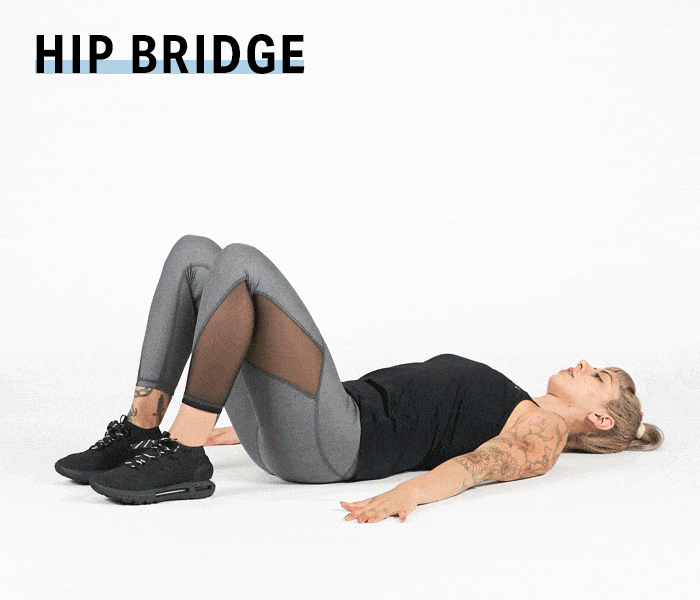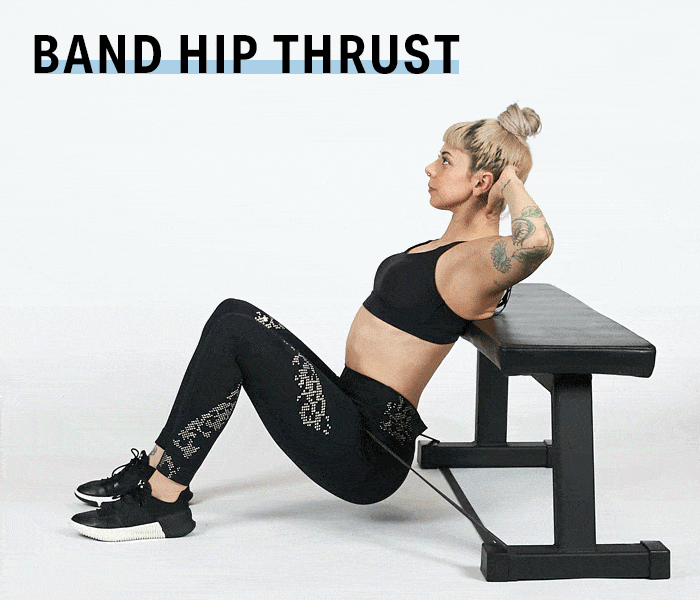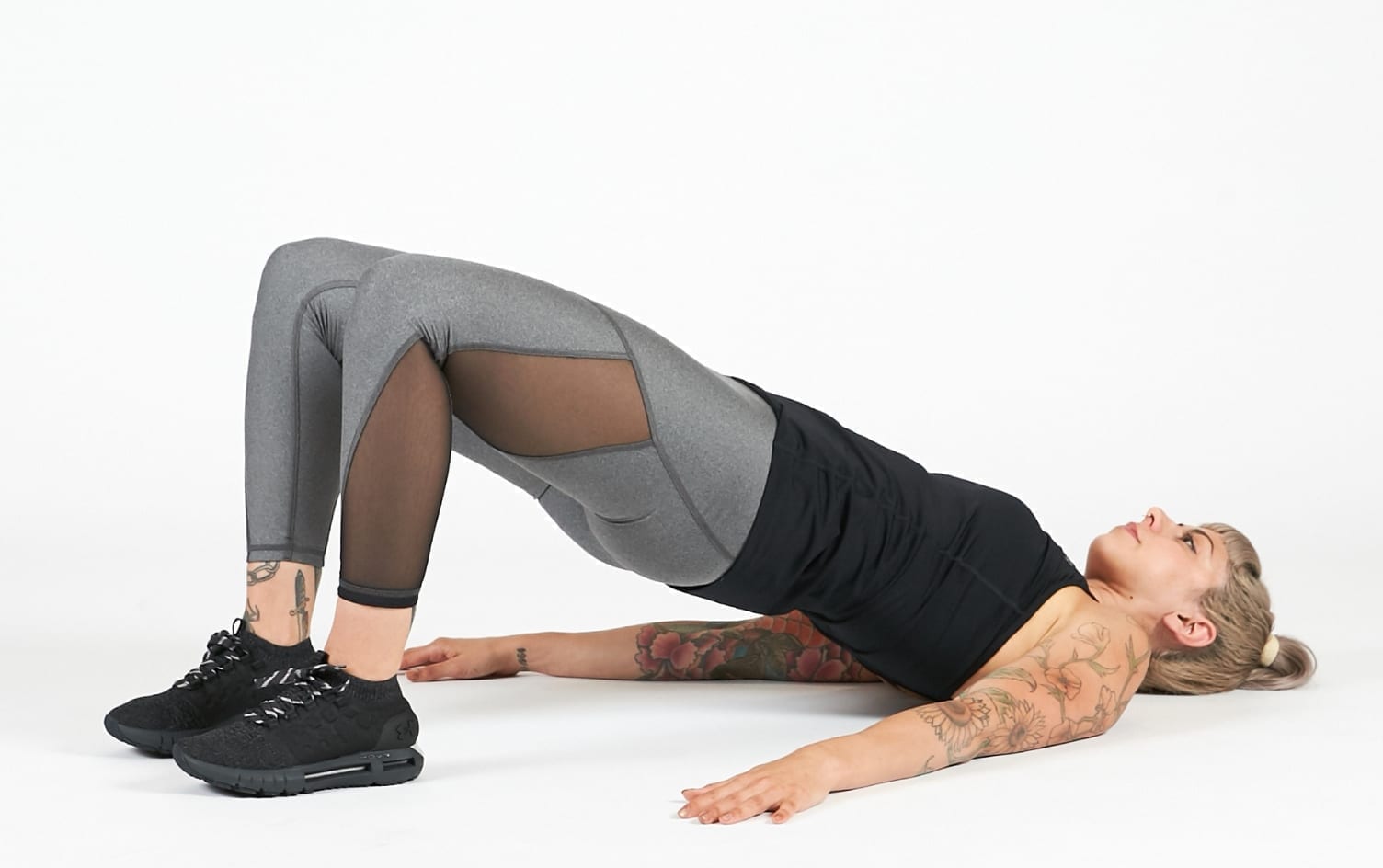Over the past several years, glute training has exploded. It makes sense, since having a strong backside can boost your strength overall and reduce your risk of injury.
While there are lots of ways to train your glutes, the most direct is an exercise called the hip thrust. Though it might look a little awkward to lean against a bench and thrust your hips in the air in the weight room, fans of the movement can attest that there’s really nothing like it for building, developing and strengthening the glutes.
Plus, it can help you improve other lifts, like deadlifts and squats. “The hip thrust is a very underrated exercise for improving leg strength” says Steven Mack, certified strength and conditioning specialist and owner of Simple Solutions Fitness.
Getting hip thrusts right can be tricky. Here are five simple ways to ensure you’re getting the most out of this glute-centric exercise.

One of the most common issues people have with hip thrusts is primarily pushing from the legs instead of using the glutes. “Lazy glutes are an actual thing,” explains Kari Woodall, owner of BLAZE. “Your body tends to recruit other muscles first, typically the hamstrings.” Re-training your muscles to fire in the proper sequence takes effort and practice.
To get the most glute activation in a hip thrust, try warming your glutes up before you start your workout. Here’s how:

“Lie on your back on the floor with knees bent,” Woodall advises. “Relax all of the muscles in your legs and begin by trying to squeeze your glutes. Hold for a few counts without tightening your leg muscles, then relax. Once you can do this, add a slow hip extension (hip bridge) by contracting your glutes so they lift up off of the floor. Hold the hip bridge for a few counts, lower slowly and repeat 12–16 reps.” Once you’ve established a mind-body connection to your glutes, start your hip thrust sets and feel the burn.

Different people may feel hip thrusts more in their glutes with different foot positioning. “Individual hip anatomy can make all the difference in which hip thrust variation you feel the most,” Mack explains.
Experimenting with various stances can help you figure out which setup is right for you. Mack suggests trying your feet:
- Shoulder-width apart, pointed straight forward
- Slightly wider than shoulder-width, pointed slightly outward
- Close to your butt
- Further from your body
- Between those two extremes, with your legs at a right angle at full extension.
Even if you’re not new to hip thrusts, it might still be worth considering changing your stance. “You might find your preferences have changed,” Mack notes. “One variation just feels better than the others have in the past. Try periodically evaluating which hip thrust variation you feel your glutes working the most in.”

“If you can’t feel your glutes, lower the weight and concentrate on getting quality reps for a month or two first,” Mack recommends. “Use a variety of heavy (1–5 reps), medium (6–15 reps) and light weights (15+ reps), concentrating on perfecting as many reps as you can.”

“The hip thrust is a hip-dominant movement and should be controlled both at the top and bottom positions of the movement,” says Brian Nguyen, CEO of Elementally Strong.
“All too often, I see people turning off their core at the bottom of the movement or when their butt is on the floor.” This can put unnecessary pressure on the lower back and could potentially lead to injury with a heavily-loaded barbell.

“To help the body engage throughout the full range of motion on the hip thrust, use a superband to create lateral tension,” Nguyen recommends. “Attach a band or superband to a fixed anchor. Get yourself inside the loop so that the band is pulling directly at left or right side of your waist. You can move away from the anchor point for more tension. Now, as you hip thrust up and down, resist the lateral force and keep yourself and your core in the midline throughout the motion. Do each side for 90 seconds adjusting your tension and tempo to give your movement great awareness and engagement.”

Just like any other movement, you’ll need to keep making hip thrusts more difficult to continue seeing results. “Just like we load any hip hinge movement to stimulate muscle activation, you will soon need to progress from double leg hip thrusts to single leg and then to loaded barbell hip thrusts, etc.,” says Geoff Tripp, certified strength and conditioning specialist and lead personal trainer at Trainiac. “You’ll need more time under tension for muscle development to take place.”




